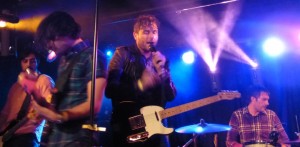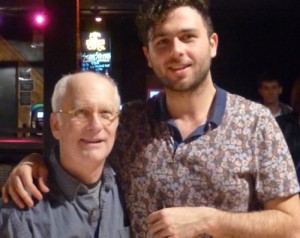Jill Barber’s US Tour 9/22-9/30—Stopping at NY Joe’s Pub Sept 25
 A heads-up to music fans in Ann Arbor, Cambridge/Boston, NYC, Philadelphia, DC/Virginia, and Pittsburgh: Beginning Sept 22, Canadian chanteuse Jill Barber will embark on a mini-tour of the US with her superb band, debuting her her new album, “Fool’s Gold” for US audiences. In NYC, she’ll be playing at Joe’s Pub, the same venue where I heard her play in 2012, a fantastic show. This is a write-up of that performance, in which I wrote, “Barber exuded a winsome charm, unselfconscious glamour, and improvised with light banter between songs. She sings in a distinctive tone that is the aural equivalent of B Grade maple syrup—my favorite kind—sweet and smoky.” Her repertoire, most of which she writes herself or co-writes, sung in English and French, evokes classic torch music. If you’re looking for a great evening of romantic music, come out and hear her one of the cities below or buy a copy of “Fool’s Gold.” See tour details below.
A heads-up to music fans in Ann Arbor, Cambridge/Boston, NYC, Philadelphia, DC/Virginia, and Pittsburgh: Beginning Sept 22, Canadian chanteuse Jill Barber will embark on a mini-tour of the US with her superb band, debuting her her new album, “Fool’s Gold” for US audiences. In NYC, she’ll be playing at Joe’s Pub, the same venue where I heard her play in 2012, a fantastic show. This is a write-up of that performance, in which I wrote, “Barber exuded a winsome charm, unselfconscious glamour, and improvised with light banter between songs. She sings in a distinctive tone that is the aural equivalent of B Grade maple syrup—my favorite kind—sweet and smoky.” Her repertoire, most of which she writes herself or co-writes, sung in English and French, evokes classic torch music. If you’re looking for a great evening of romantic music, come out and hear her one of the cities below or buy a copy of “Fool’s Gold.” See tour details below.
09/22 Ann Arbor, MI – The Ark
09/24 Cambridge, MA – Regattabar
09/25 New York, NY – Joe’s Pub
09/27 Philadelphia, PA – Tin Angel
09/28 Vienna, VA – Jammin’ Java
09/30 Pittsburgh, PA – Club Cafe 
09/22 Ann Arbor, MI – The Ark
09/24 Cambridge, MA – Regattabar
09/25 New York, NY – Joe’s Pub
09/27 Philadelphia, PA – Tin Angel
09/28 Vienna, VA – Jammin’ Java
09/30 Pittsburgh, PA – Club Cafe 







